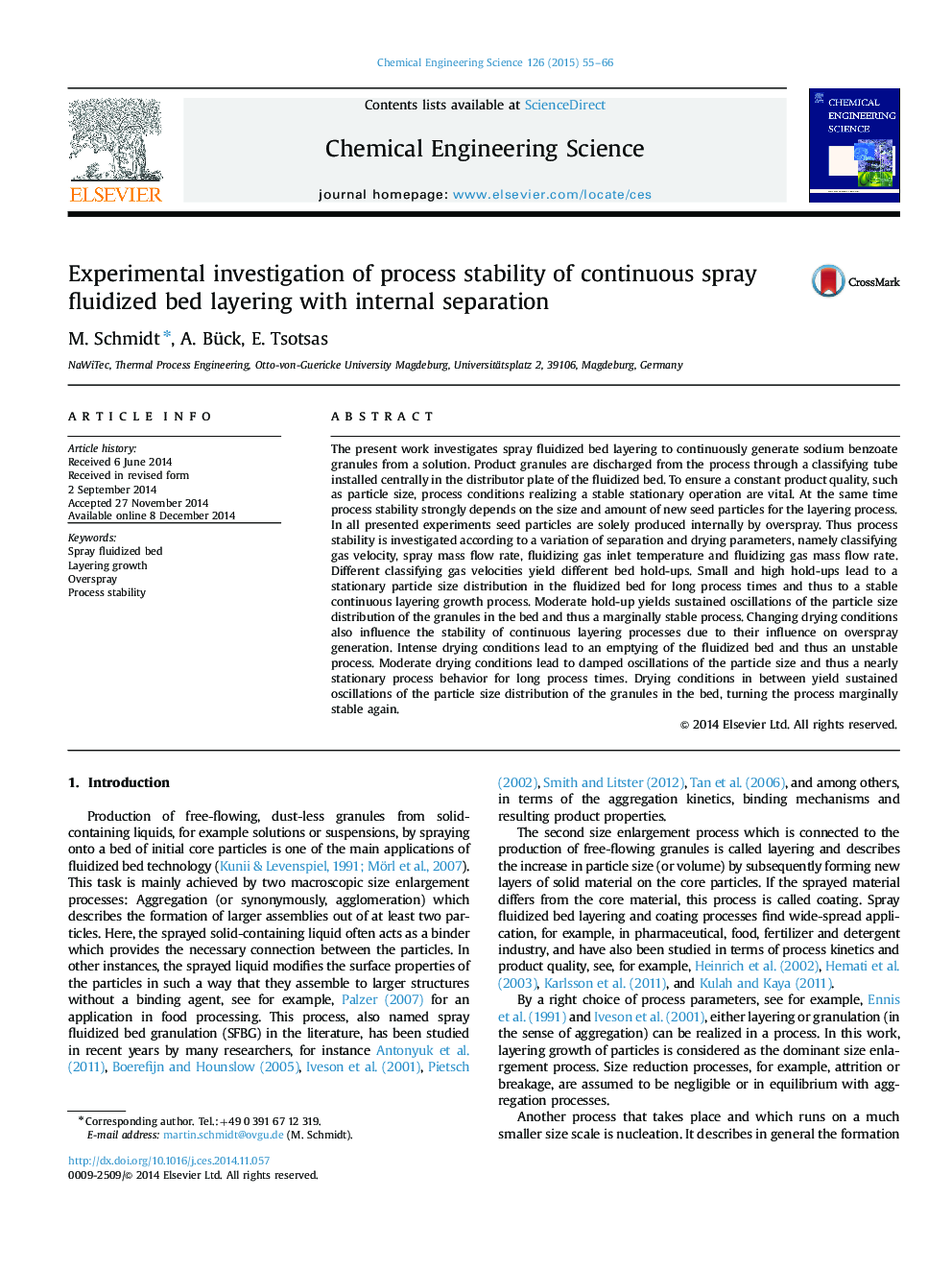| Article ID | Journal | Published Year | Pages | File Type |
|---|---|---|---|---|
| 6590217 | Chemical Engineering Science | 2015 | 12 Pages |
Abstract
The present work investigates spray fluidized bed layering to continuously generate sodium benzoate granules from a solution. Product granules are discharged from the process through a classifying tube installed centrally in the distributor plate of the fluidized bed. To ensure a constant product quality, such as particle size, process conditions realizing a stable stationary operation are vital. At the same time process stability strongly depends on the size and amount of new seed particles for the layering process. In all presented experiments seed particles are solely produced internally by overspray. Thus process stability is investigated according to a variation of separation and drying parameters, namely classifying gas velocity, spray mass flow rate, fluidizing gas inlet temperature and fluidizing gas mass flow rate. Different classifying gas velocities yield different bed hold-ups. Small and high hold-ups lead to a stationary particle size distribution in the fluidized bed for long process times and thus to a stable continuous layering growth process. Moderate hold-up yields sustained oscillations of the particle size distribution of the granules in the bed and thus a marginally stable process. Changing drying conditions also influence the stability of continuous layering processes due to their influence on overspray generation. Intense drying conditions lead to an emptying of the fluidized bed and thus an unstable process. Moderate drying conditions lead to damped oscillations of the particle size and thus a nearly stationary process behavior for long process times. Drying conditions in between yield sustained oscillations of the particle size distribution of the granules in the bed, turning the process marginally stable again.
Keywords
Related Topics
Physical Sciences and Engineering
Chemical Engineering
Chemical Engineering (General)
Authors
M. Schmidt, A. Bück, E. Tsotsas,
